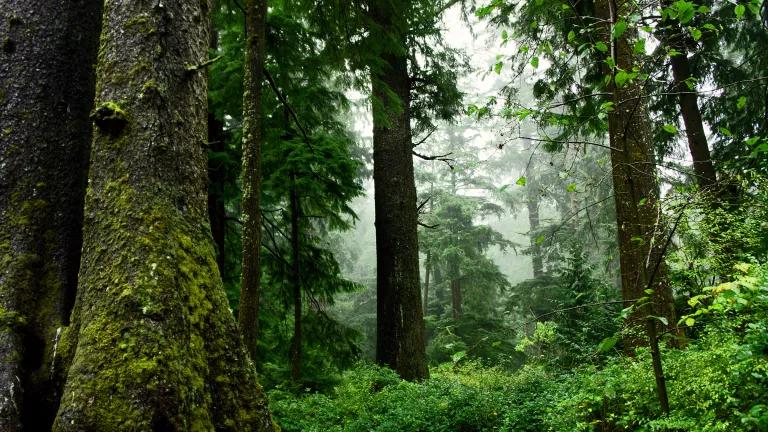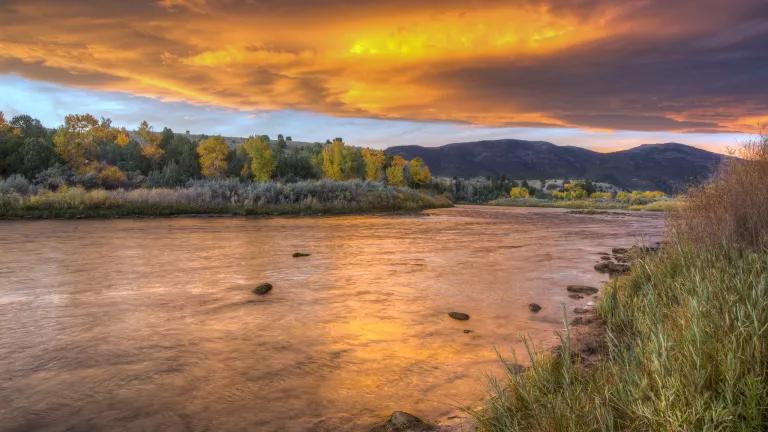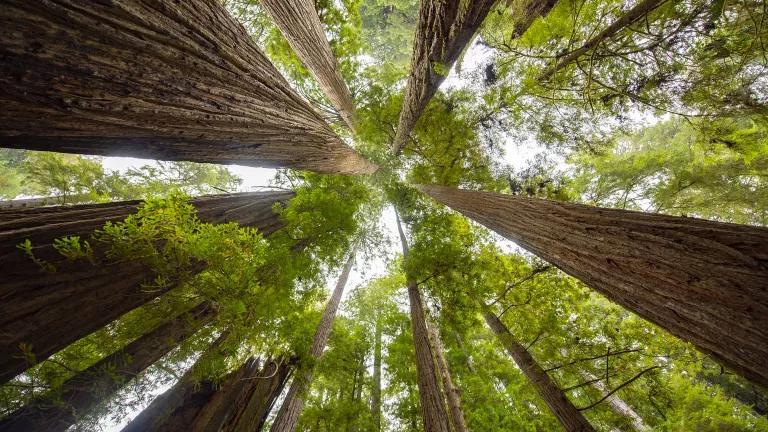Seizing the Opportunity for Old-Growth Protections
The Forest Service has started to formalize protections for our oldest national forests. Now we must ensure the process lives up to its potential.

Old growth forest in Oswald West State Park, Oregon
David Patte/USFWS
The Forest Service wrapped up 2023 by announcing their intent to amend all 128 forest land management plans to better protect old-growth conditions. Old-growth trees and forests are vital to maintaining healthy and complex forest ecosystems. These trees absorb and store huge amounts of carbon, providing a myriad of water and air purifying services, while housing innumerable species and providing cool, shady refuge in a changing climate.
Starting a process to develop old-growth forest protections certainly constitutes a step in the right direction. However, the devil is in the details.
What the announcement says.
December’s notice of intent to amend forest plans calls for the conservation and stewardship of old-growth forest conditions, as well as measures to recruit future old-growth, fostering long-term resilience of such conditions and broader ecological integrity. The idea posed in the announcement is that these provisions will provide a consistent approach to managing for old-growth conditions, while allowing for the regional flexibility necessary to meet the unique needs of each forest type.
Perhaps the most exciting piece of the proposed amendment is a move towards ending the commercial logging of old-growth trees. This is exactly the kind of change that could shift the conversations within the Forest Service from looking at our biggest oldest trees as a commodity or revenue stream, to looking at them as the vital, load-bearing pillars of forest stability needed for healthy ecosystem function and climate change mitigation.
These are commendable goals – but execution is key.
These kinds of changes could bring about a much-needed shift in the way the U.S. manages our climate-critical forests. However, sending old-growth trees to the mill is not off the table just yet. As written, economic reasons cannot not be the primary purpose of logging. This distinction matters because it is rare that economic value is openly claimed as the primary reason for logging. Rather, logging projects often justify tree cutting for a variety of other reasons - frequently framed as an ecological necessity - and then the agency sells the big, old trees as a byproduct of that project.
This is problematic because logging our oldest trees results in significant carbon emissions (regardless of their end-use), eliminates their sequestration potential, and undermines the host of other co-benefits they provide. Despite being the only threat to forests wholly under the Agency's control, the impact of logging is significantly downplayed because it is seen as a treatment option or solution to address other ecological threats, such as pest infestation and wildfire, as opposed to a threat in and of itself.
The new amendment would not stop this commonplace practice, as old growth trees may be logged for any of the numerous “ecological” rationales listed in the notice. All a forester needs to do is identify which exception is applicable to that logging project. As long as those rationales remain the primary purpose, the agency is free to sell the logged trees. This sets a troublingly low bar for justification and does little to effectively halt the commercial exchange of old-growth trees.
If these gaps are left unaddressed, they run the risk of undermining the amendment’s goals of conserving and expanding old-growth conditions.
How much old-growth is even out there?
Not much. According to a recent national inventory, old-growth forests make up just about 17% of the national portfolio of Forest Service lands. Of that old-growth, about half is currently protected in wilderness areas, roadless areas, or national monuments. It is important to remember that if these trees were easy to access, they would have been logged a long time ago. Now we have the choice to either protect and expand what little old-growth remains or allow the last trees standing to fall – hindering our ability to maintain ecosystem function and destroying one of our best natural climate solutions.
Our best option to expand old-growth is to look ahead to the forests and trees that will become old-growth if we let them live. The mature classification of trees is largely absent from the announcement. The same federal inventory mentioned above identified mature trees as comprising 46% of the federal forest portfolio and only about a third of that is already in protected areas. Focusing our efforts on both mature and old-growth forests creates an unparalleled opportunity to expand the extent of our old-growth forests in a meaningful way.
Here’s what comes next.
This amendment has good bones. Now they just need to be fleshed out in a way that closes the gaps and ambiguities that would prevent the policy from achieving its goals and the goals of EO 14072, which calls for the protection of our nation’s mature and old growth forests.
The Forest Service currently has an open comment period that calls for public input on their proposed amendment. You can make your voice heard by signing this petition calling for an end to the felling of old-growth trees, a halt in the commercial exchange of old-growth trees, the necessary inclusion of mature forests, and improvements to clarify the definitions used.



